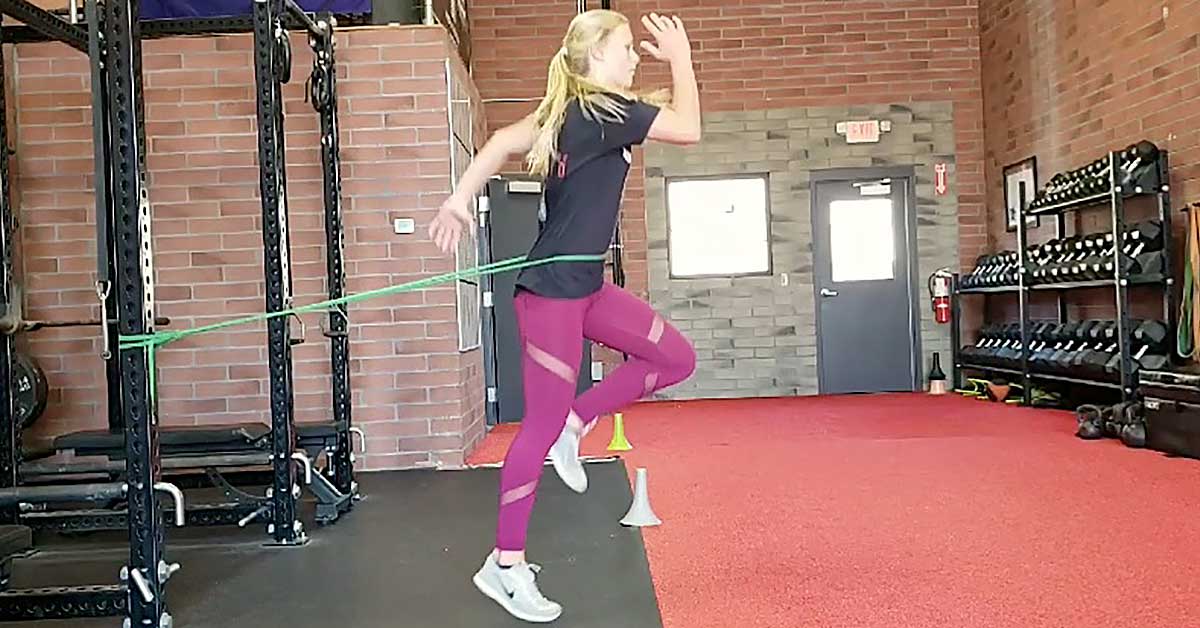Running plays are vital in many sports. They offer strategic advantages and can change the game.
Learning how to elaborate running plays can seem tricky at first. But with the right guidance, it becomes easier to understand and execute. Running plays involve precise moves and teamwork. They require players to know their roles and work together.
This guide will help you break down these plays. By the end, you will grasp the basics and be ready to practice them. Understanding running plays can improve your game and give you an edge. Ready to dive in? Let’s get started.
Introduction To Running
Running is a popular form of exercise. It is simple and accessible. Almost anyone can do it. You don’t need fancy equipment. You just need a good pair of shoes. Running can be done anywhere. It can be done in parks, streets, or trails. It is a great way to improve health. Let’s dive into the world of running.
History Of Running
Running has a long history. It dates back to ancient times. Early humans ran to hunt and escape danger. In ancient Greece, running was a sport. The first Olympic Games featured running events. Over time, running became part of many cultures. Today, millions run for fitness and fun.
Benefits Of Running
Running offers many benefits. It improves cardiovascular health. It strengthens muscles and bones. Running helps with weight loss. It boosts mental health. It reduces stress and anxiety. Running can also improve sleep quality. It enhances overall well-being. It is a great way to stay fit and healthy.

Credit: simplifaster.com
Setting Goals
Setting goals can help you stay motivated and track your progress. Goals give you something to aim for and can make running more enjoyable. They can be short-term or long-term, depending on your needs and ambitions.
Short-term Goals
Short-term goals are milestones you plan to achieve soon. They can range from running a specific distance to improving your speed. For example, you might aim to run 5 kilometers in under 30 minutes. Short-term goals should be realistic and achievable.
They keep you motivated and give you a sense of accomplishment. Small victories build confidence and help you maintain a positive mindset. Remember to celebrate each achievement.
Long-term Goals
Long-term goals focus on what you want to achieve in the future. They require more time and dedication. Examples include running a marathon or improving overall endurance.
Setting long-term goals helps you stay committed. They give you something to work towards over months or even years. These goals should be challenging but attainable. They push you to keep improving and striving for better results.
Break down long-term goals into smaller steps. This makes them less overwhelming. Track your progress regularly and adjust your plan as needed. Always keep your main goal in sight.
Proper Gear
Wearing the right gear can make or break your running experience. Proper gear boosts performance and prevents injuries. Let’s dive into two key aspects of running gear: shoes and clothing.
Choosing The Right Shoes
Running shoes are crucial for comfort and support. Look for shoes with good cushioning. This helps absorb impact. Ensure the shoes fit well. Avoid too tight or too loose shoes. Consider your foot type. Flat, neutral, or high arches need different support. Visit a specialized store for a fitting. They can help identify your needs. Rotate your shoes regularly. This prevents wear and tear.
Clothing And Accessories
Wear breathable, moisture-wicking clothes. These help regulate body temperature. Avoid cotton as it retains sweat. Choose synthetic materials or merino wool. Dress in layers for colder weather. A base layer keeps you warm. An outer layer protects against wind and rain. Reflective gear enhances visibility. This is vital for safety in low light.
Select comfortable socks. They should prevent blisters and wick moisture. A good running hat or visor protects from the sun. Sunglasses shield your eyes from UV rays. A hydration belt or handheld bottle keeps you hydrated. Use a running watch to track your progress. It monitors distance, time, and heart rate.
Warm-up And Cool-down
Running is a great way to stay fit. But, a good run starts and ends with proper warm-up and cool-down routines. These steps prevent injuries and improve performance.
Effective Warm-up Routines
Before running, it’s essential to warm up. Warming up prepares your body for the activity. It increases blood flow to the muscles and reduces the risk of injury.
Here are some effective warm-up routines:
- Dynamic Stretching: These are active movements that stretch the muscles to their full range of motion. Examples include leg swings and arm circles.
- Light Jogging: Jog at a slow pace for 5-10 minutes. This helps to gradually increase your heart rate.
- High Knees: This exercise involves lifting your knees high while jogging in place. It helps to activate your core and leg muscles.
- Butt Kicks: Run in place while kicking your heels up towards your buttocks. This helps to warm up the hamstrings.
Importance Of Cool-down
Cooling down after a run is just as important as warming up. It helps your body transition back to a resting state. This process reduces muscle stiffness and soreness.
Here are some cool-down activities:
- Slow Jogging or Walking: Slow down your pace gradually. Spend 5-10 minutes jogging or walking slowly.
- Static Stretching: Hold each stretch for 15-30 seconds. Focus on major muscle groups like calves, hamstrings, and quadriceps.
- Deep Breathing: Practice deep breathing exercises to help relax your muscles and lower your heart rate.
Both warm-up and cool-down routines are crucial for a safe and effective running experience. Incorporate these practices into your running routine to improve performance and reduce the risk of injuries.
Running Techniques
Running is a fantastic way to keep fit. Proper running techniques can enhance performance and prevent injuries. Below, we will explore two crucial aspects of running techniques: Breathing Techniques and Proper Form.
Breathing Techniques
Effective breathing is vital while running. It ensures your muscles get enough oxygen. Breathe in through your nose and out through your mouth. This method helps maintain a steady pace. Inhale deeply, filling your lungs completely. Then, exhale fully to remove all the carbon dioxide. This process keeps your energy levels up.
Try to match your breathing with your steps. A common pattern is to inhale for three steps and exhale for two. Adjust this pattern based on your comfort and pace. Slow, controlled breaths prevent side stitches and improve endurance.
Proper Form
Maintaining proper form is essential to avoid injuries. Keep your head up and look ahead. This position keeps your body aligned. Your shoulders should be relaxed, not hunched. Swing your arms naturally at your sides. Keep them bent at a 90-degree angle.
Your torso should remain upright, not leaning forward. This posture allows for better lung expansion. Pay attention to your legs and feet. Land softly on the midfoot, not the heel. A soft landing reduces impact and stress on your joints. Your strides should be short and quick. Avoid overstriding, as it leads to injuries.
By focusing on these techniques, you can run more efficiently and enjoy the activity more.
Training Plans
Creating a training plan for running is essential. It helps you stay on track and reach your goals. Whether you’re a beginner or an advanced runner, a structured plan can improve your performance and keep you motivated. Let’s dive into the specifics of training plans for different levels.
Beginner Plans
If you’re new to running, start slow. Focus on building a strong foundation. Here are some key points:
- Start with a mix of walking and running.
- Gradually increase your running intervals.
- Aim for three runs per week.
- Include rest days to allow recovery.
Here’s a simple 4-week beginner plan:
| Week | Monday | Wednesday | Friday |
|---|---|---|---|
| 1 | Walk 5 min, Run 1 min (Repeat 5 times) | Walk 5 min, Run 1 min (Repeat 5 times) | Walk 5 min, Run 1 min (Repeat 5 times) |
| 2 | Walk 4 min, Run 2 min (Repeat 5 times) | Walk 4 min, Run 2 min (Repeat 5 times) | Walk 4 min, Run 2 min (Repeat 5 times) |
| 3 | Walk 3 min, Run 3 min (Repeat 5 times) | Walk 3 min, Run 3 min (Repeat 5 times) | Walk 3 min, Run 3 min (Repeat 5 times) |
| 4 | Walk 2 min, Run 4 min (Repeat 5 times) | Walk 2 min, Run 4 min (Repeat 5 times) | Walk 2 min, Run 4 min (Repeat 5 times) |
Advanced Plans
If you’re an experienced runner, aim to boost your speed and endurance. Consider these steps:
- Incorporate interval training.
- Add tempo runs to your schedule.
- Plan for long runs on weekends.
- Include strength training to avoid injuries.
Here’s a sample 4-week advanced plan:
| Week | Monday | Wednesday | Friday | Sunday |
|---|---|---|---|---|
| 1 | 5 miles easy | Intervals: 4x800m at 5K pace | 5 miles tempo | 10 miles long |
| 2 | 6 miles easy | Intervals: 6x400m at 5K pace | 6 miles tempo | 12 miles long |
| 3 | 7 miles easy | Intervals: 5x800m at 5K pace | 7 miles tempo | 14 miles long |
| 4 | 8 miles easy | Intervals: 6x800m at 5K pace | 8 miles tempo | 16 miles long |
Nutrition For Runners
Proper nutrition is vital for runners. It helps improve performance and recovery. Knowing what to eat and when is key. This guide provides tips on pre-run meals and post-run recovery.
Pre-run Meals
Eating before a run fuels your body. Choose easily digestible foods. Aim to eat 2-3 hours before running. Good options include oatmeal, bananas, or toast with peanut butter. Avoid high-fat or high-fiber foods. These can cause stomach issues during your run. Hydrate well. Drink water or an electrolyte drink.
Post-run Recovery
After running, your body needs to recover. Eat a meal within 30 minutes. Focus on protein and carbs. Examples are a chicken sandwich or a smoothie with yogurt and fruit. Rehydrate with water or a sports drink. This helps replace lost fluids and electrolytes. Remember, proper post-run nutrition aids muscle repair and reduces soreness.

Credit: www.alamy.com
Common Mistakes
Running is a fantastic way to stay fit and healthy. Yet, many runners, especially beginners, often make common mistakes. These errors can lead to injuries or decreased performance. Understanding these pitfalls can help you avoid them and improve your running experience.
Overtraining
Overtraining is a common issue among runners. It happens when you push yourself too hard without giving your body enough time to recover. This can lead to fatigue, poor performance, and injuries.
Signs of Overtraining:
- Chronic fatigue
- Decreased performance
- Persistent muscle soreness
- Increased irritability
To avoid overtraining, follow these tips:
- Include rest days in your training schedule.
- Listen to your body and take breaks when needed.
- Gradually increase your running distance and intensity.
Ignoring Pain
Ignoring pain is a mistake that can lead to serious injuries. Pain is your body’s way of telling you something is wrong. Never run through pain.
Common Injuries from Ignoring Pain:
| Injury | Symptoms |
|---|---|
| Shin Splints | Pain in the lower leg |
| Runner’s Knee | Pain around the kneecap |
| Stress Fractures | Severe pain in a specific spot |
To prevent injuries, follow these steps:
- Stop running if you feel pain.
- Consult a doctor or physiotherapist if pain persists.
- Invest in proper running shoes.
Staying Motivated
Staying motivated during a running journey can be a challenge for many. The key is to find ways to keep the excitement alive. Here’s how you can stay motivated and make your running journey enjoyable.
Finding A Running Community
Joining a running community can make a huge difference. Running with others brings a sense of belonging. It makes the activity more fun and social.
Look for local running groups or clubs. Many cities have them. You can also find virtual communities online. Websites and apps offer groups where runners share their experiences and tips.
Running with others can push you to go further. You can meet new friends and share your progress. It is a great way to keep the motivation high.
Tracking Progress
Keeping track of your progress is essential. It shows how far you’ve come and keeps you motivated. You can use various tools to track your running progress.
- Running apps – Many apps track distance, pace, and calories burned.
- Wearable devices – Fitness trackers and smartwatches provide detailed stats.
- Running journals – Write down your runs and improvements in a notebook.
Seeing your progress can be very motivating. It helps you set new goals and achieve them.
| Tool | Benefits |
|---|---|
| Running Apps | Track distance, pace, and calories |
| Wearable Devices | Provide detailed stats |
| Running Journals | Record your runs and improvements |
Use these tools regularly. They can help you stay focused and motivated.

Credit: www.amazon.com
Frequently Asked Questions
What Is Running Playing?
Running playing is a dynamic form of exercise that combines running with playful activities. It enhances cardiovascular health and overall fitness.
How Does Running Playing Benefit Health?
Running playing improves cardiovascular fitness, strengthens muscles, and boosts mental health. It also promotes social interaction and fun.
Can Beginners Start Running Playing?
Yes, beginners can start with light activities and gradually increase intensity. It’s important to listen to your body.
What Equipment Is Needed For Running Playing?
Basic running gear like comfortable shoes and breathable clothing is essential. Optional equipment includes a stopwatch and hydration pack.
Conclusion
Running can boost your health and mood. Start slow, build up your pace. Consistency is key. Stay hydrated, wear good shoes, and listen to your body. Mix running with fun. Change routes, join a group, or run with music. Enjoy the process.
Running is not just exercise; it’s a journey. Embrace it.



